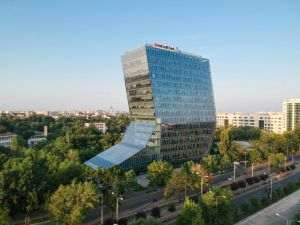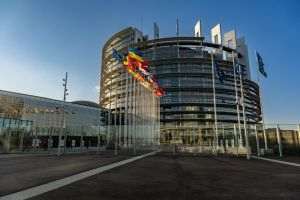Hell, including that of pollution, is paved with good intentions. New Delhi was declared the world's most polluted city at the end of last week, following a new wave of pollution generated by the celebration of Diwali, one of the most important Hindu festivals, which symbolizes the victory of light over darkness. Despite an official ban on the use of firecrackers, many residents defied restrictions and lit fireworks, thus worsening air quality to dangerous levels.
• Alarming increase in PM2.5 particle pollution
After the festive night, New Delhi woke up enveloped in a dense smog, which covered emblematic places of the city, such as the Presidential Palace and the adjacent gardens, a popular recreation spot for runners and cyclists, inform the Reuters and AFP agencies. Measurements taken on Friday morning by Swiss air quality monitoring company IQAir showed an alarming concentration of 345 micrograms of PM2.5 particles per cubic meter. This value exceeds the limit recommended by the World Health Organization (WHO) of 15 micrograms of PM2.5 per cubic meter, a level considered safe for human health. PM2.5, fine and carcinogenic particles generated by combustion and industrial emissions, are extremely dangerous to health because they enter the bloodstream through the lungs. Repeated exposure to these microparticles can lead to chronic respiratory diseases, cardiovascular diseases and even lung cancer, considerably increasing the risk for residents of highly polluted cities.
• Causes of pollution: agriculture, industry and festivities
New Delhi, a metropolis with over 30 million inhabitants, is affected by pollution peaks every winter, a phenomenon aggravated by various activities. First, the burning of stubble in neighboring states, a traditional practice by farmers clearing their fields for the new farming season, contributes massively to rising pollution levels. Added to this are emissions from factories and heavy road traffic, which are part of the daily life of a densely populated metropolis. In recent years, fireworks and firecrackers lit during Diwali have become another major factor in air pollution. Although local authorities have banned the use of firecrackers, a decision imposed by the Supreme Court of India, effective enforcement of the restriction has proven difficult. Firecrackers and fireworks are seen as essential elements of the festival, symbolizing hope and prosperity, and many people are vehemently opposed to giving them up.
• Authority Efforts and Defiance of Bans
The authorities in New Delhi have stepped up measures to combat pollution this year, announcing in mid-October a "total ban" on the manufacture, storage, sale and use of firecrackers, which will remain in effect until the end of the year. The severe measure is part of a series of restrictions that have been gradually introduced in an attempt to protect public health. The city police confiscated almost two tons of fireworks in the days leading up to Diwali, but the banned products continued to be available for sale in neighboring states, often smuggled into New Delhi. For many residents, however, the symbolic value of fireworks outweighs legal constraints. This resistance has also been amplified by Hindu religious associations, which consider the ban an attack on tradition and cultural identity. In fact, some law enforcement agencies are reluctant to intervene, given the religious and cultural sensitivities of this holiday.
• Environmental crisis and public health
The question of the balance between preserving traditions and protecting public health has become increasingly acute for the authorities in India. While certain segments of the population want to preserve customs, more and more residents of large cities are aware of the harmful impact of pollution and are demanding firm measures. This episode of massive pollution in New Delhi highlights the importance of a coherent and firmly applied environmental policy that responds to both public health needs and those of respecting cultural diversity. The pollution crisis in the Indian capital has become a symbol of increasingly complex urban challenges, where tradition, economy and ecological responsibility are called upon to coexist in a fragile balance.















































